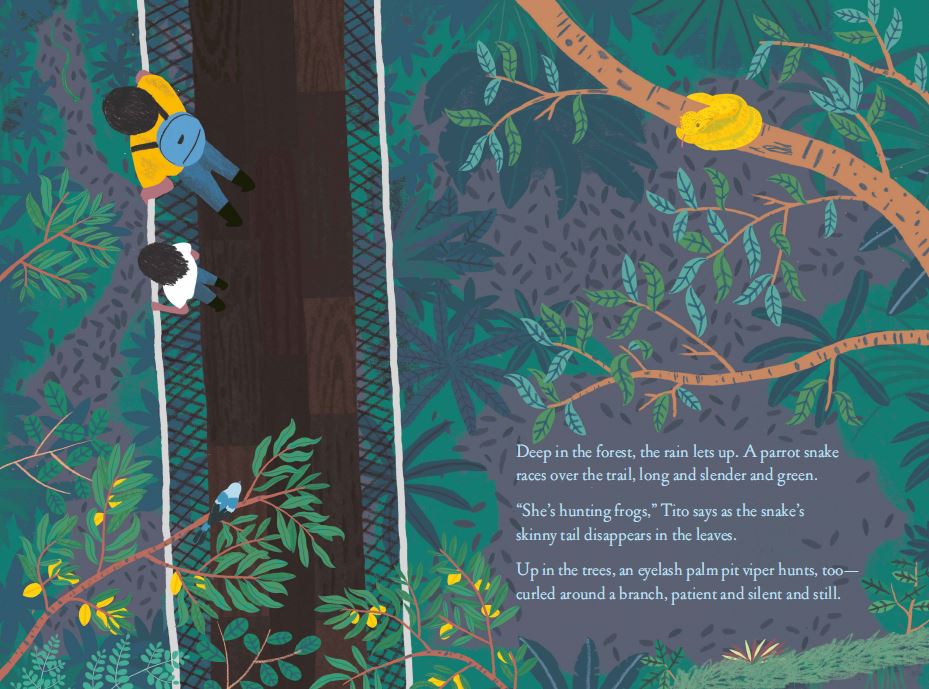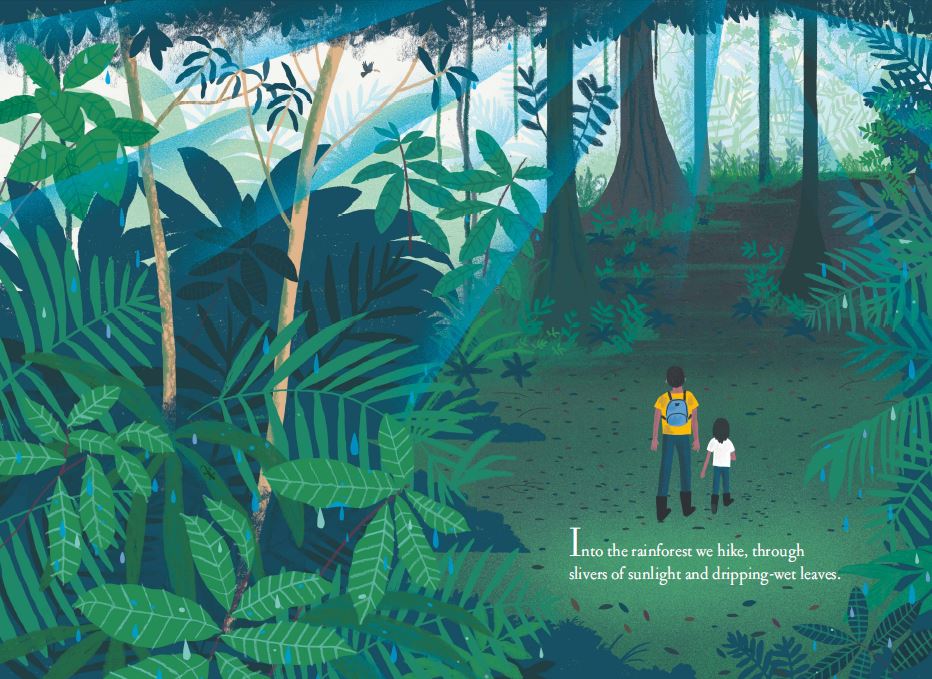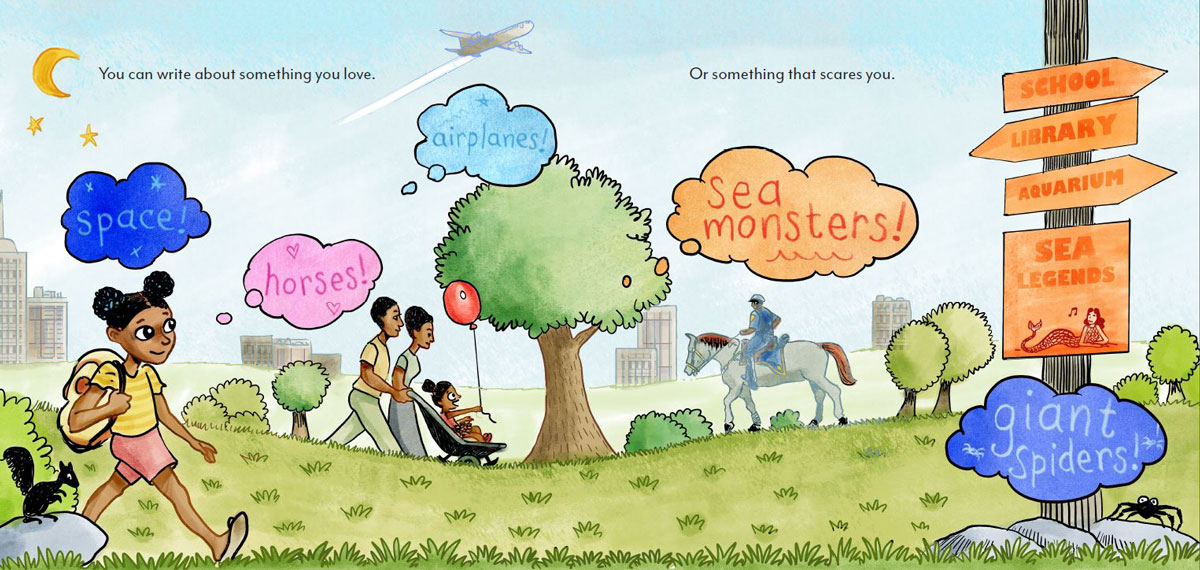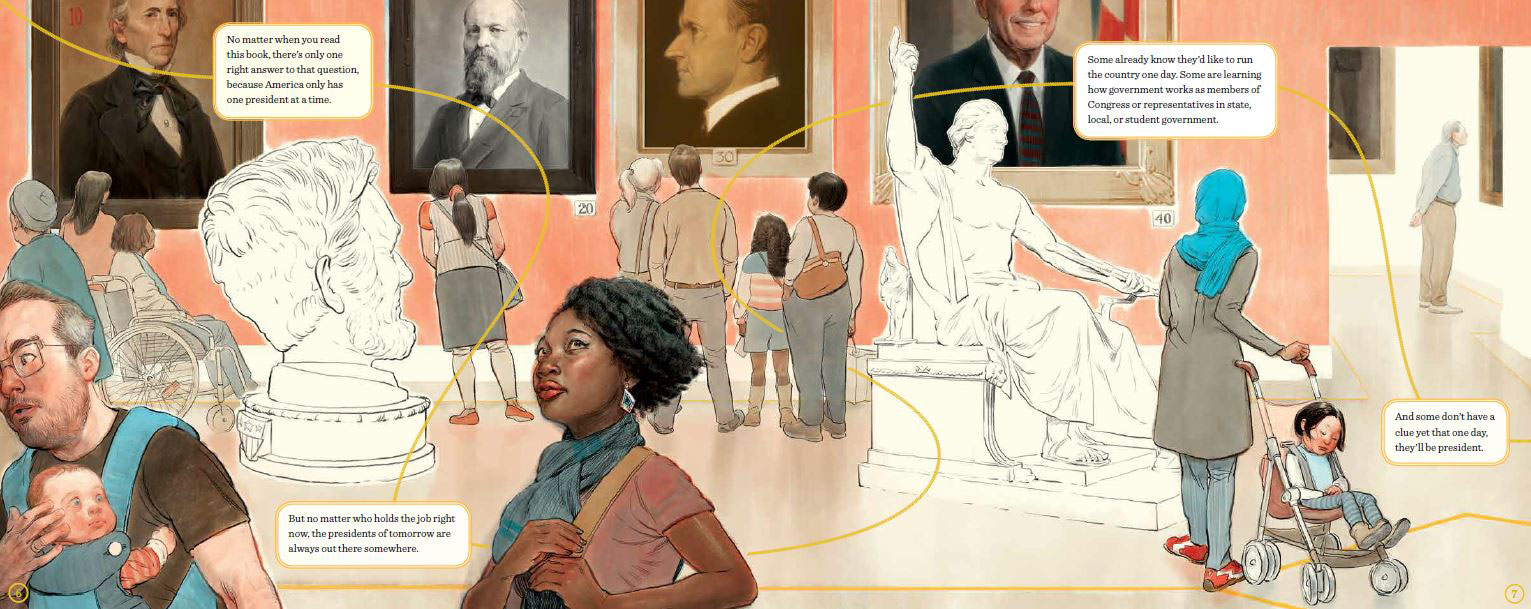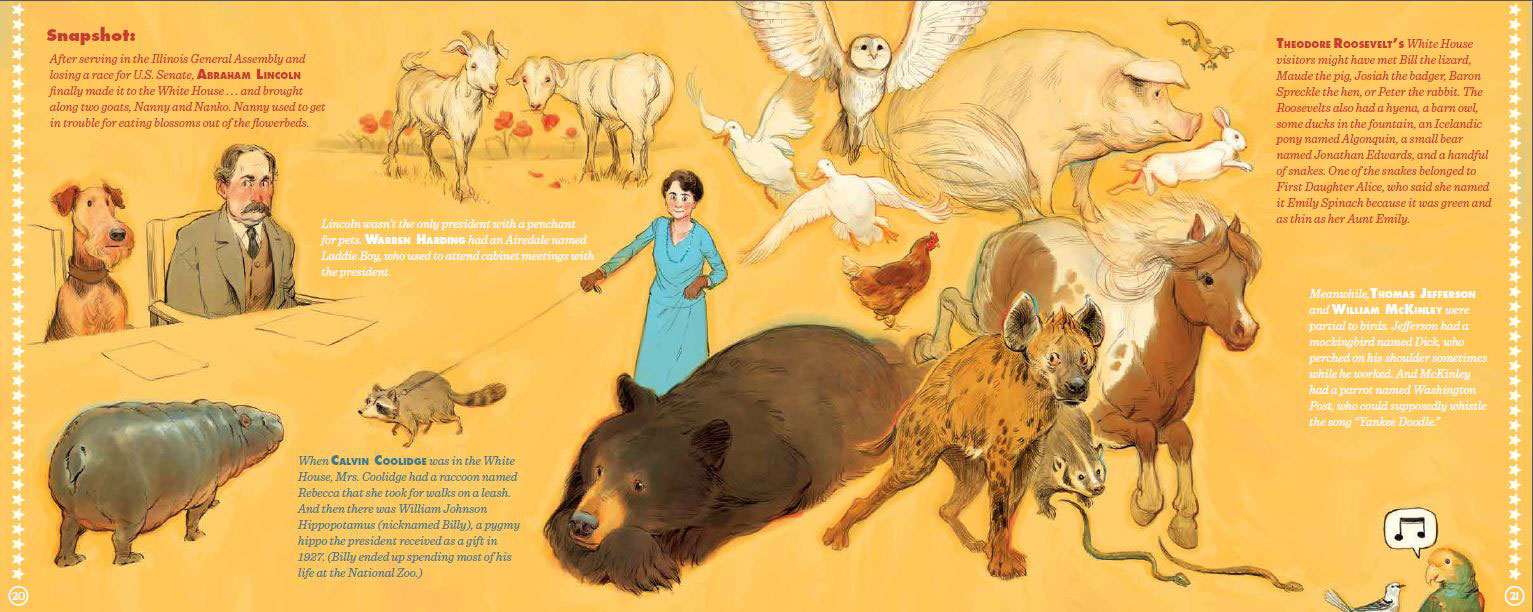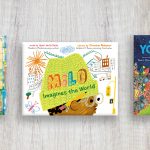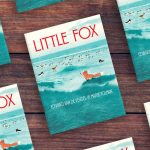It only takes a quick glance at Kate Messner’s website to grasp that she’s a prolific, award-winning writer with a wide array of books to her credit. Digging deeper reveals something more: No matter what the subject matter, age level, or genre, Messner’s books never fail to deliver the unexpected. Messner talks with Lisa Bullard about how she has channeled her innate curiosity into an impressive list of books that surprise, amaze, and sometimes challenge young readers.
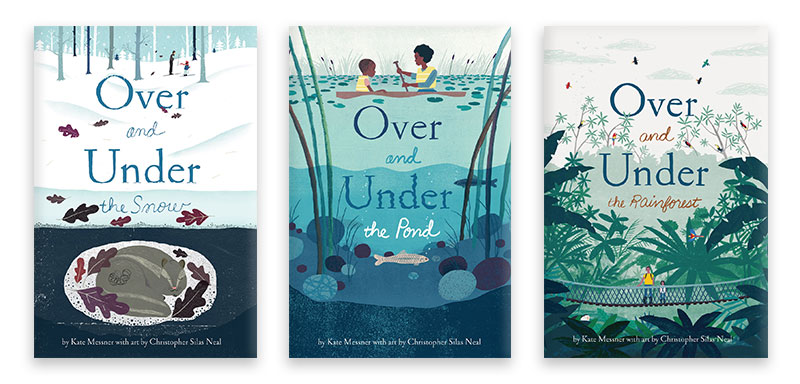
You had an impressive number of new books come out in 2020, and that trend continues in 2021. So, I’m going to begin by asking about the newest title from one of my favorite series, Over and Under the Rainforest. I’m not alone, either—in her ReadingPowerGear blog, elementary teacher Adrienne Gear says, “I love this series and have used them extensively in classrooms.” What is it that draws you back to this format?
Over and Under the Snow was one of my very first books, and it’s been such a joy to share these explorations of nature with young readers. I love the format of this series because it invites curiosity, and when I’m writing these books, even if the setting is a place I’ve known my whole life, I always discover something new.
Interior spreads from Over and Under the Rainforest
Will you be exploring other habitats in the future?
Yes, there are more Over/Under nature books on the way! We’ll have Over and Under the Canyon in Fall 2021, followed by Over and Under the Waves in 2022.
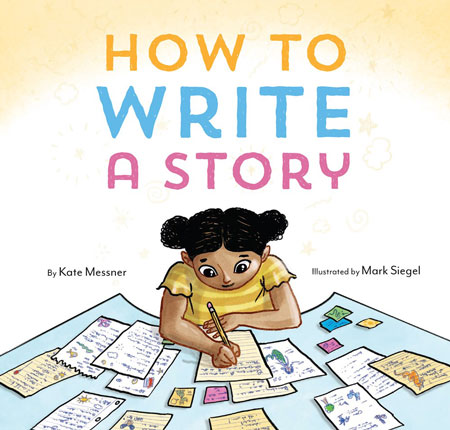
Your recent picture book How to Write a Story breaks down story writing into a step-by-step process, which is sure to be a boon to educators or parents working with students at home. You also give writing presentations in schools all around the country. What are your most helpful tips for young writers?
Whenever I talk with young writers—or writers of any age, really—I share two main suggestions. The first is to read and read and read. The more you read, the more you learn about writing by discovering how stories work and what musical sentences sound like. The second suggestion is to carry a notebook. Writing down ideas and collecting interesting details teaches you to see the world like a writer, looking closely and noticing small things, and even if you don’t end up publishing books, this is just a lovely way to go through life.
Interior spread from How to Write a Story
You were a teacher for many years before focusing on your writing career. What advice do you have for educators and librarians who would also love to write a book someday?
My best advice for anyone who wants to write is simply to write. You don’t need to wait for a summer off or a special invitation or some kind of permission slip. If you have the desire to write, go ahead and start scribbling down scenes and brainstorming ideas. You also don’t need any huge block of time. It’s possible to write a novel little by little, with just a bit of writing each day.
“My best advice for anyone who wants to write is simply to write. You don’t need to wait for a summer off or a special invitation or some kind of permission slip.”
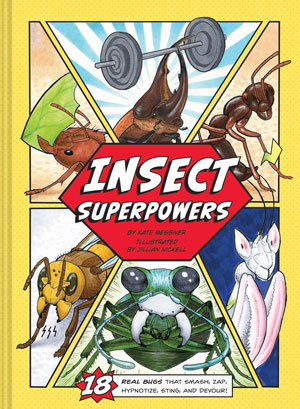
You have a knack for seeing the world through young readers’ eyes. For example, in Insect Superpowers, you dub one insect “Machine Gun Butt” and another “The Vomitizer.” I don’t know any kid who could resist those names! How do you find your way into that “kid’s eye view” of things?
My whole world view is very kid-like, I think, in that it’s driven by curiosity, and that’s really at the heart of all of my books. My first impulse is always to explore and ask questions, and that’s true whether I’m learning about insects with weird superpowers or stories from history. And this is inevitably where I connect with kids at school visits and bookstores as well. I have so many fond memories of talking sharks with second graders or debating the merits of various presidents with third-grade history buffs.
Many of your titles are connected by the notion of discovering the truth beyond the surface of things. In the Over and Under series, you explore the hidden life of animals. Your History Smashers series draws readers into an examination of the messier truth behind the “easier” stories we’ve been taught. What draws you to dig deeper in this way?
I think questioning naturally goes along with curiosity, and that’s always been a part of who I’ve been. When I was growing up, I was always that kid with a million questions, whether I was wondering about an animal in the woods behind our house or something that happened in the news or something I learned in Sunday school. And that’s really served me well as a researcher and writer.
“When I was growing up, I was always that kid with a million questions, whether I was wondering about an animal in the woods behind our house or something that happened in the news or something I learned in Sunday school.”
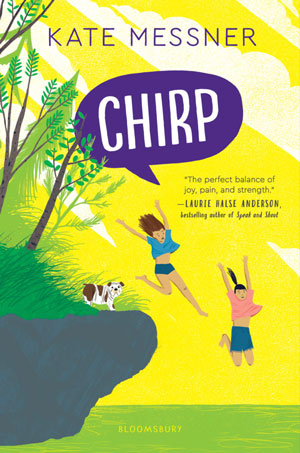
Along with your many engaging nonfiction titles, you also had a very well-received middle-grade mystery called Chirp published in 2020. I was struck by your skill in capturing your character Mia’s perspective as she faces a hard truth. Is your approach to writing fiction different from your approach to writing informational titles?
My process is the same in that all of my books begin with that spark of curiosity, but things diverge from there. With novels like Chirp, I’m still doing lots of researching—looking into things like cricket farms, gymnastics, and entrepreneurship—but my primary focus is on creating authentic characters. That’s the first step, I think, in crafting stories that feel True. (And I’m capitalizing that because it’s not the same as writing true informational texts. Novels that feel True are honest with readers and respectful of the real lives kids lead; they capture the universal emotions that connect us.)
You mentioned cricket farms, and Chirp is indeed chockful of great details about crickets. How did they make it into the story?
The whole idea for Chirp actually began with that cricket farm setting! I’d visited a Vermont cricket farm startup and was absolutely fascinated, not only with the idea of raising insects as a sustainable alternative to other protein sources, but also with the whole process of cricket farming. I ended up visiting two different cricket farms—one in Vermont and one in Texas—and sampling edible crickets in every form imaginable, from bread and cookies made with cricket flour to chocolate-covered-cricket ice cream to roasted crickets in a wide variety of flavors. Barbecue was my favorite.
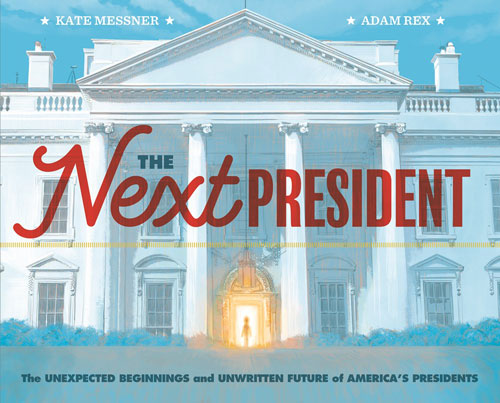
This time of year is notable because of both Inauguration Day and Presidents’ Day, great tie-ins to your recent book The Next President, which takes a really innovative approach to teaching children about the history of the presidency. Are young readers as enthusiastic about the title as I imagine them to be?
Yes! Of all the books I released last year, this is the one that families tell me they read over and over again, noticing something new every time. I’ve gotten a lot of emails from kids who eat up all the secret details about past presidents and also love imagining the future—and the possibility that one day they might lead the country, too. That notion of change and progress is so powerful for kids—the idea that America is always changing, and young readers are the citizens who will choose our leaders (and be our leaders!) down the road.
Interior spreads from The Next President
“That notion of change and progress is so powerful for kids—the idea that America is always changing, and young readers are the citizens who will choose our leaders (and be our leaders!) down the road.”
How do you juggle everything required to write so many carefully crafted books?
Well, some days I juggle more effectively than others, but thank you for saying that! The way I write—working on multiple projects with different genres and topics—is just really well suited for someone as curious as I am. I love that I get to work on different kinds of projects for kids of all different ages. On most days, I put in a morning writing session and then take a break for exercise at lunchtime before I settle in to write for another few hours in the afternoon. That midday reset works really well for me; it gives me a second wind, and on days when I need to be working on more than one project, it allows me to clear some space in my mind before I get back to work to focus on something new.
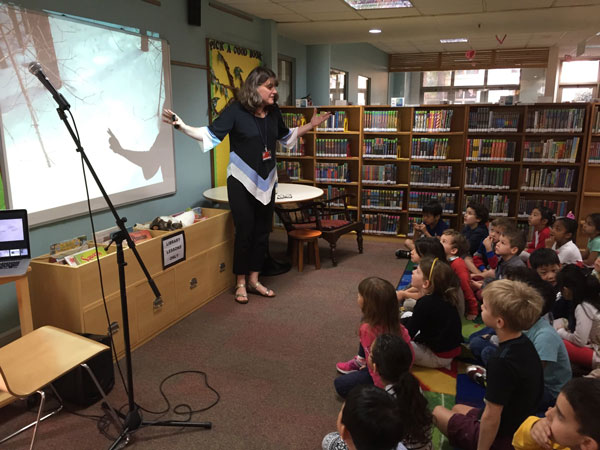
Kate Messner with students
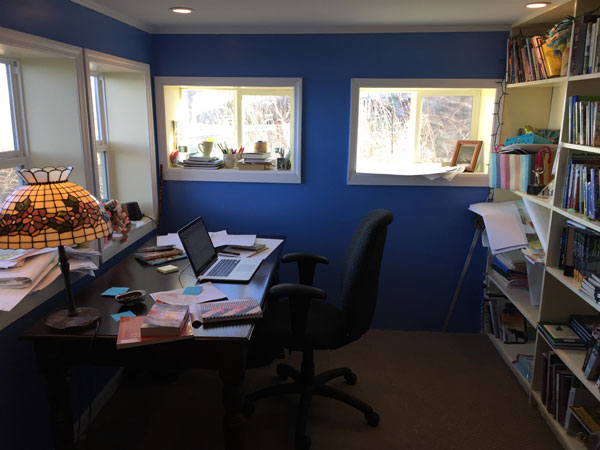
Kate Messner’s writing room
What other new or upcoming titles can readers look forward to?
When it comes to new books, my 2021 is shaping up to be almost as busy as 2020, with four more books in my History Smashers series, which is aimed at unraveling some of the lies and myths we learn about history. The series launched this summer with History Smashers: The Mayflower and History Smashers: Women’s Right to Vote, and this year we’ll release History Smashers books about Pearl Harbor, the Titanic, the American Revolution, and plagues and pandemics. There will be another book in my Fergus and Zeke easy reader series, Fergus and Zeke and the 100th Day of School. I’m finishing up edits now for a work of middle-grade nonfiction called Tracking Tortoises, about giant tortoise migration in the Galapagos Islands. I have several new picture books on the way as well, including Over and Under the Canyon and Sloth Wasn’t Sleepy, which is about an anxious sloth who has trouble getting to sleep. (This one will help little readers learn to relax at bedtime.) I’m also really excited about my picture book biography of Dr. Anthony Fauci, which comes out in July from Simon & Schuster.
I think you’ve just made my point about how prolific you are! What’s the best way for readers to learn more about all of these books?
Readers should sign up for my email newsletter for information about new releases, virtual author visits, and giveaways. They can also learn more at my website www.katemessner.com and by following me on Twitter, where I’m @KateMessner.

